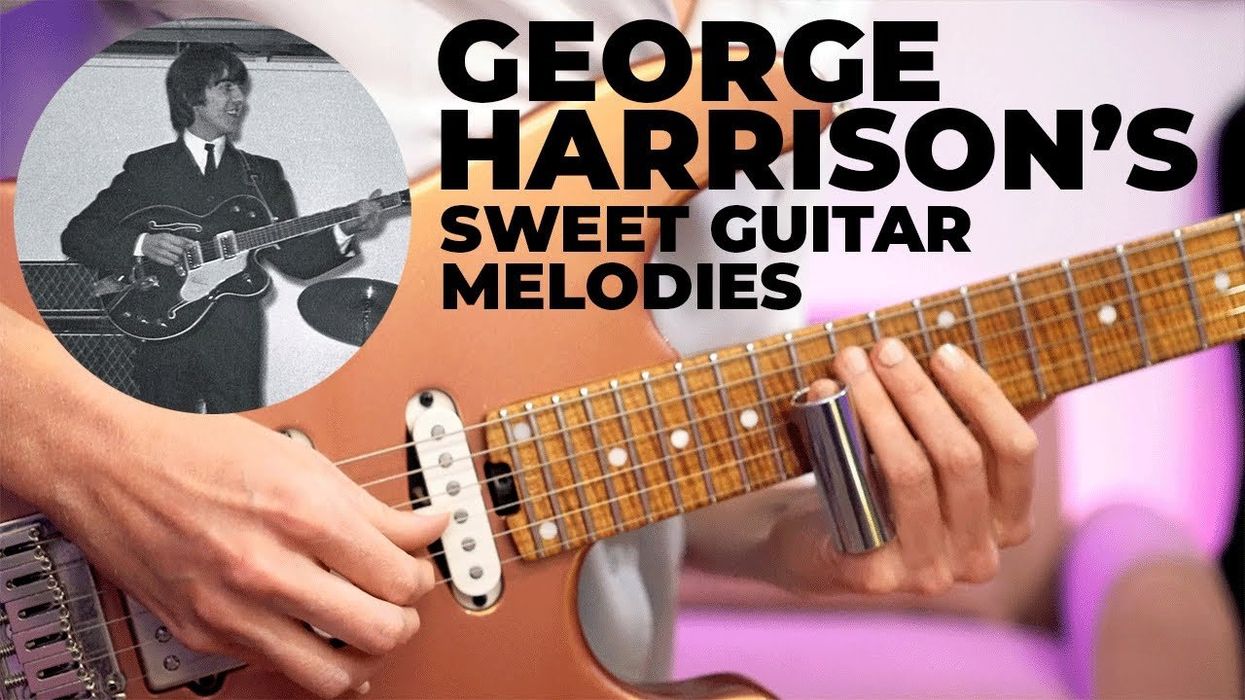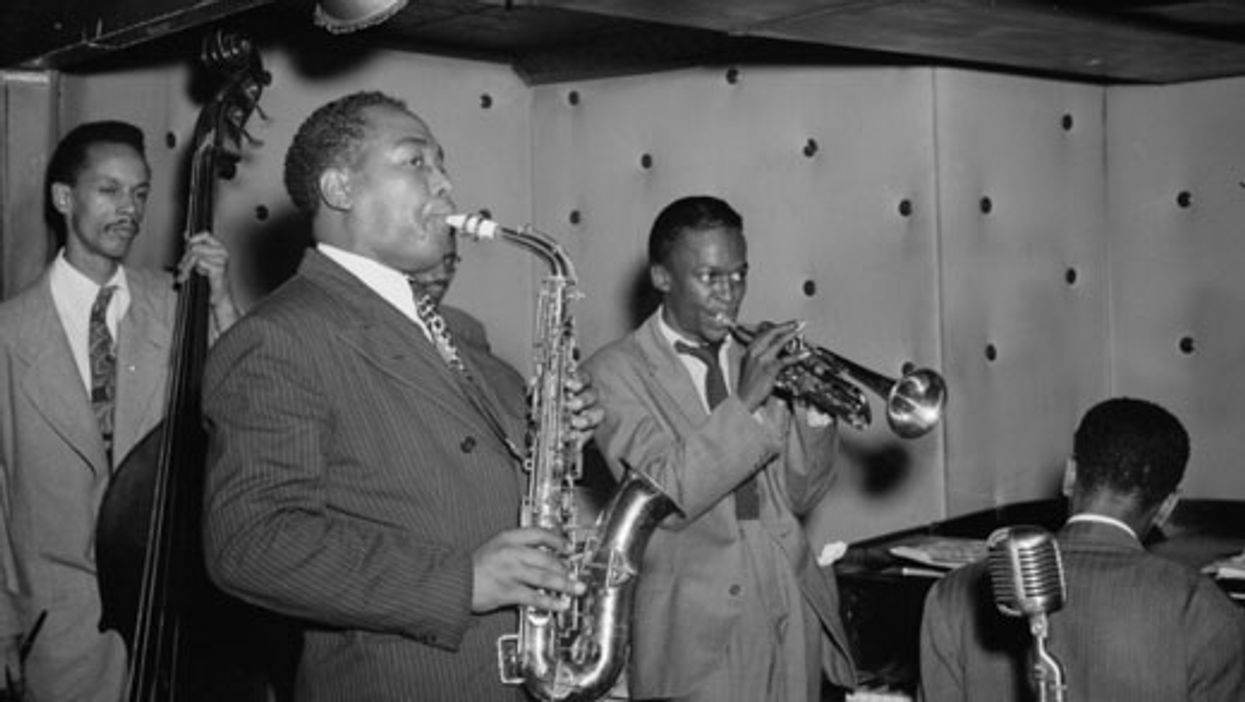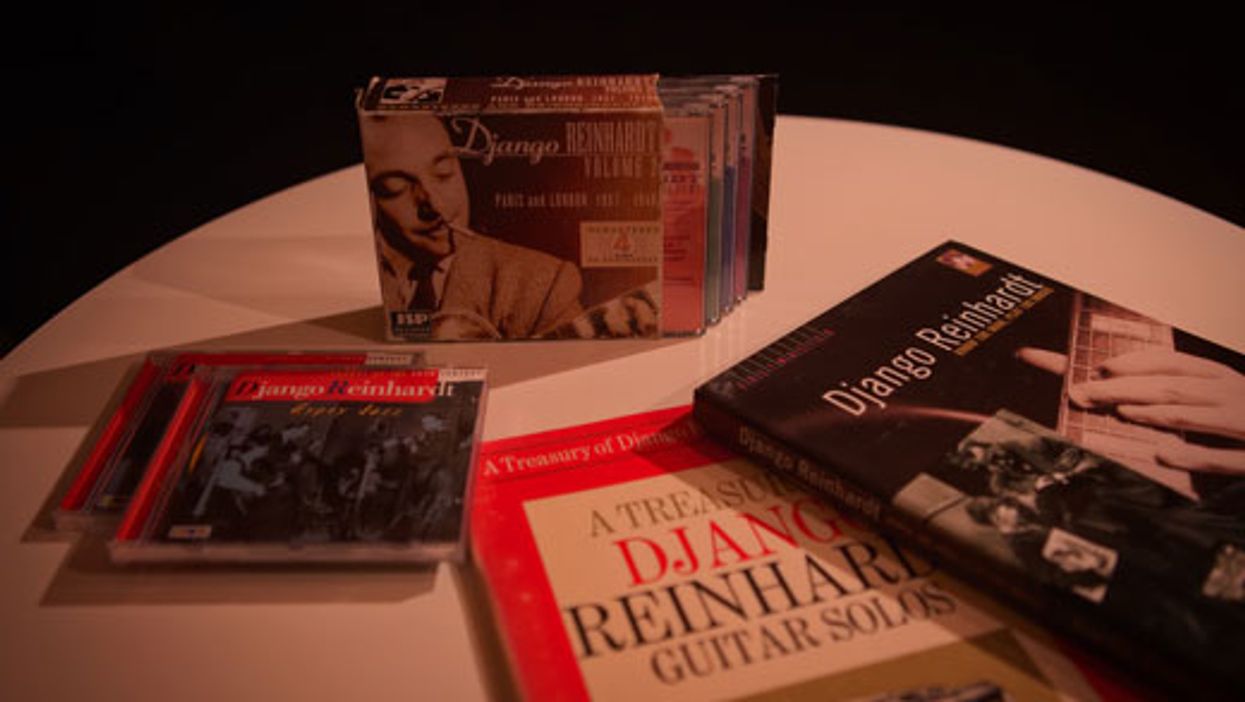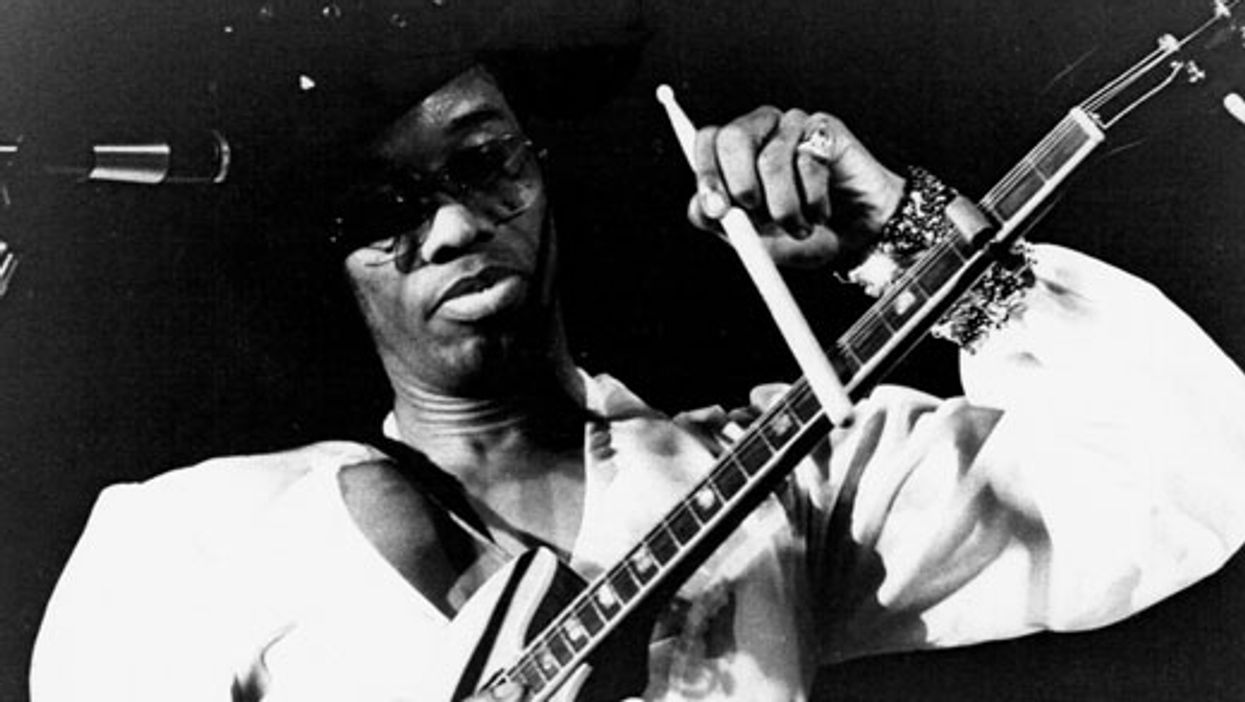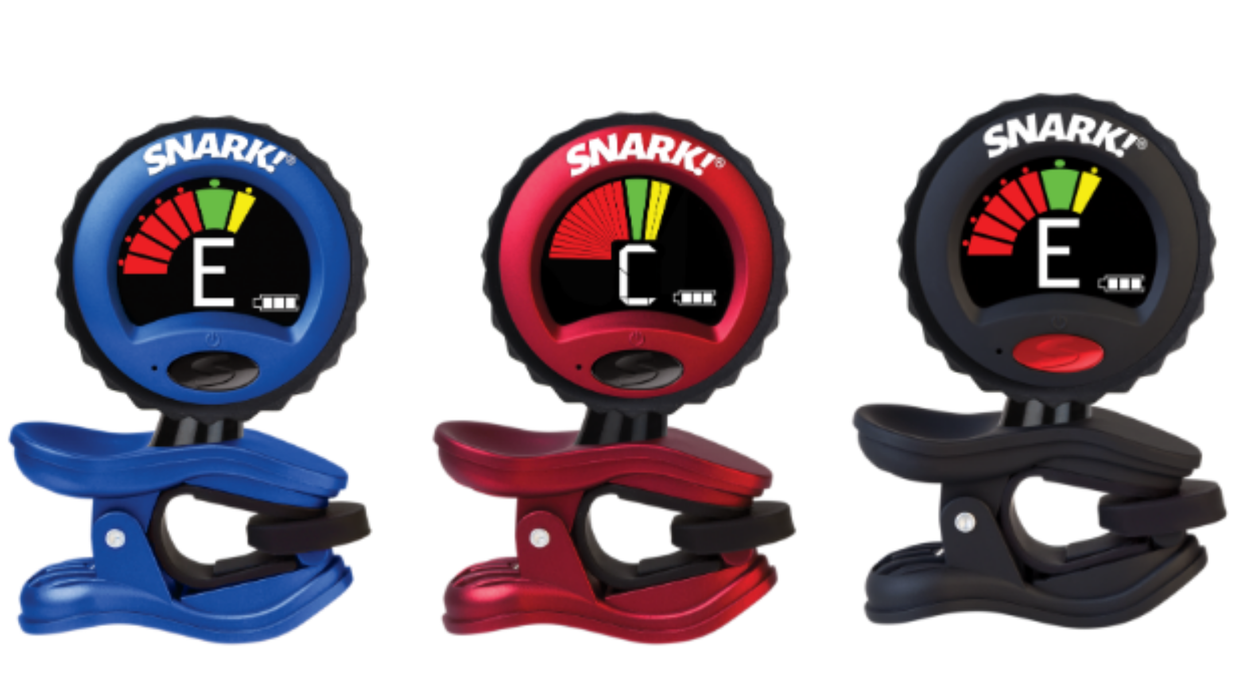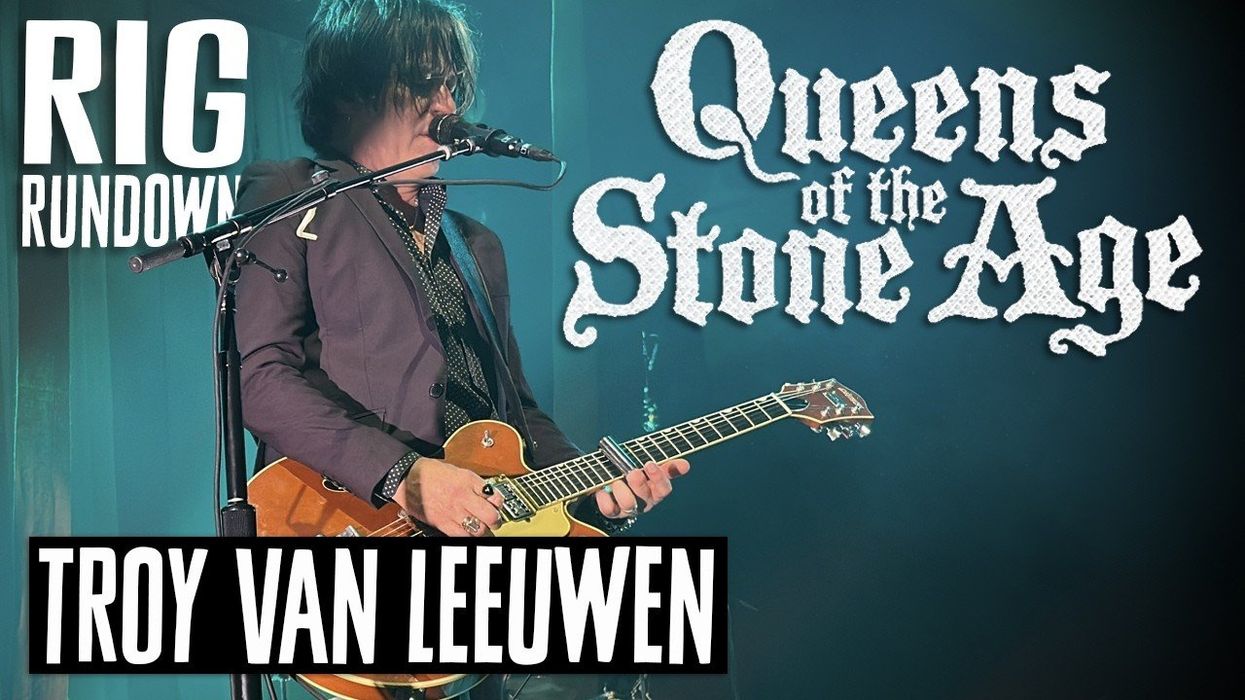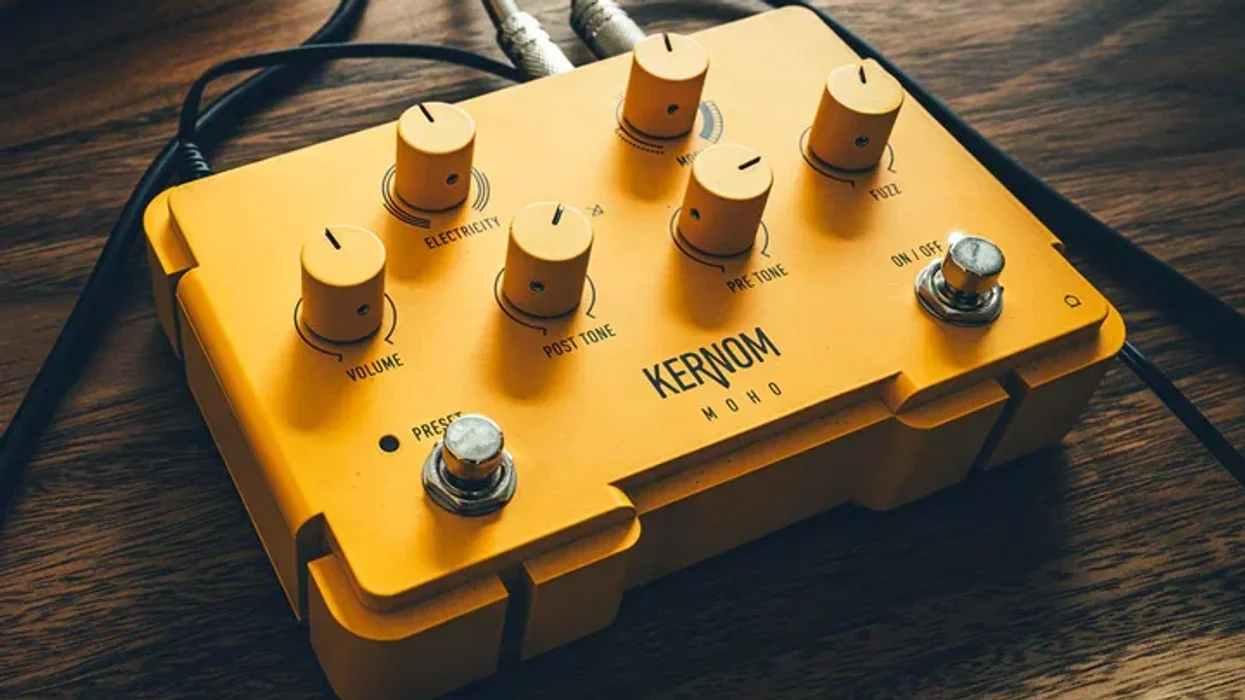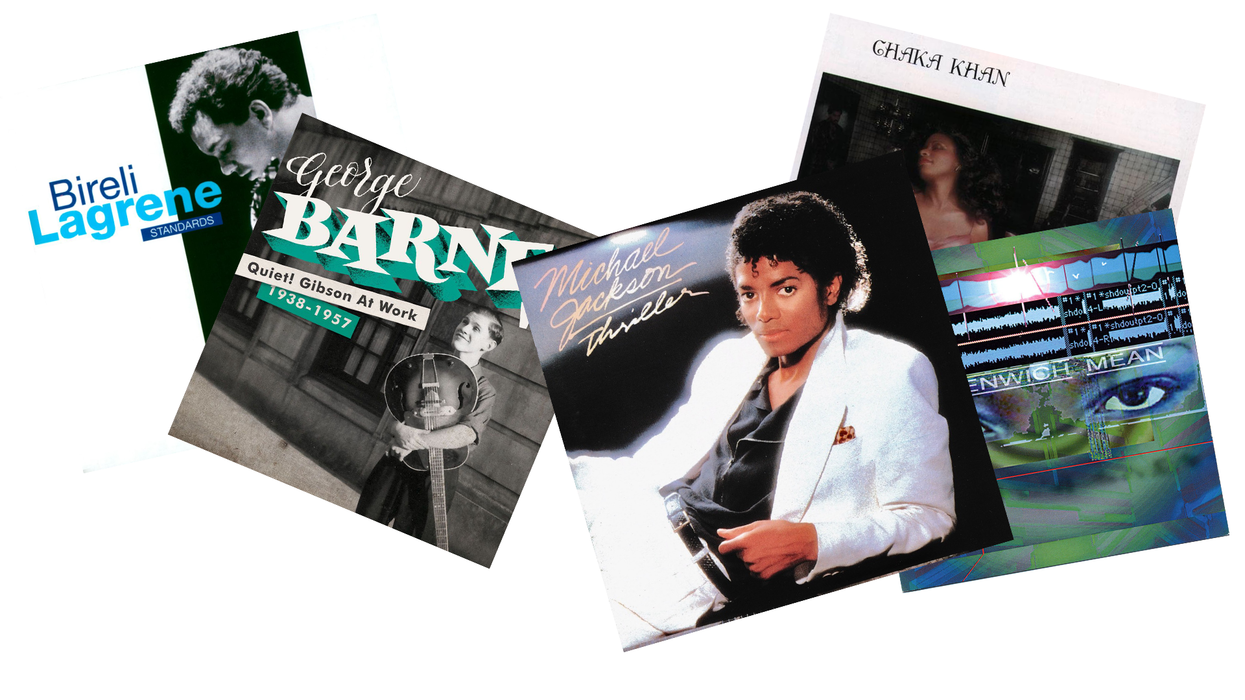Chops: Intermediate Theory: Beginner Lesson Overview: • Learn how to imitate subtle whammy bar downward dips. • Think outside of the box to emulate whacky whammy bar sounds on a fixed bridge guitar. • Use triads to replicate the gentle wobble of a Bigsby vibrato when playing chords. Click here to download a printable PDF of this lesson's notation. |
Maybe you’re like me and never been much of a whammy-bar player, always sacrificing it in favor of tuning stability and ease of setup. Even my Stratocaster-style guitars stay blocked off. As guitarists this poses an interesting challenge, considering how many sounds ranging from tasteful to extreme we’re missing out on. Rather than omitting the textures, timbres, and tricks that can be achieved with a tremolo, here are a handful of ways to emulate those sounds without having to bend your neck.
Learning to play Van Halen’s “Ain’t Talkin’ ’Bout Love”is what kickstarted the faux-whammy bar concept for me. Eddie’s first ascending lick once the band comes in is played using the bar to dip each note and return it to pitch before continuing to the next. In Ex. 1, this is closely replicated by picking the first note fretted with your third finger, pulling off and sliding back into the note from a whole-step down with your first finger, hammering on to the next note with your third finger, and continuing the pattern until the end of the lick. Be sure to put a little force behind the slides and hammer-ons, because picking only the very first note of the lick helps retain its fluidity and smoothness.
Click here for Ex. 1
In Ex. 2, I demonstrate how you can use this same technique in a different context. All shapes of the pentatonic scale work well with this concept, and in this example, I’m working out of an elongated version of the B minor pentatonic scale (B–D–E–F#–A). Making sure not to slide back into the target notes too quickly helps to make this idea more convincing.
Click here for Ex. 2
Ex. 3 is a lick similar to what John Mayer plays on the outro to “I Guess I Just Feel Like,” and is reminiscent of something you’d hear from Jeff Beck or Mark Lettieri. Combining bends, tapping, a hammer-on, and a pull-off, this seemingly simple lick has it all going on. Start at the 7th fret of the 3rd string with your 1st finger and hammer on the 9th fret with your 3rd finger. Immediately bend the note one whole-step and tap with the index finger of your right hand on the 12th fret. On beat 4, release the bend while sliding the tapped note downward one half-step to the 11th fret, and re-bend the still fretted third finger on your left hand one half-step. Release the bend slowly and completely before pulling off your tapped right index finger to the third finger on your left hand.
Click here for Ex. 3
In Ex. 4, things depart from “normal” guitar technique. If you’re right-handed, this involves playing a bend with your left hand while extending and releasing the bend with your right hand behind the left (the inverse is true if you’re left-handed). Players such as Phil X and Randy Rhoads have used this technique, imitating the soaring and plummeting effect achieved with a floating tremolo. Taking some liberties with the E minor pentatonic scale (E–G–A–B–D), I fret the 3rd string on the 14th fret and bend it up a minor third. I then reach behind my fretting hand, grab the string, and bend it up another minor third before slowly releasing it.
The key to nailing this technique is to grab the string with your right hand about halfway between the nut and where you are fretting the string. If you grab too close to either one, it will be more difficult to bend. Word of caution: When used constantly and/or pushed to the extreme, have a spare set of strings nearby.
Click here for Ex. 4
Now that we’ve opened the proverbial Pandora’s Box of imitating more extreme whammy bar techniques, let’s look at a simple way to achieve the wonderful wobbly goodness of a Bigsby vibrato in Ex. 5—without the hassle of having to re-string one. My favorite timbre from a Bigsby is the smooth and soft effect it can have on chords. By using triads rather than chords than span four, five, or six strings, it becomes much easier to apply finger vibrato to them. The catch is this: A Bigsby has both downward and upward travel from the original pitch, but using your fingers to apply vibrato can only induce upwards pitch travel from the original pitch. Unless you’re attempting to do the impossible and bend into entire chords, the key to this technique is simply to avoid a rigid and fast vibrato.
Click here for Ex. 5
While it’s impossible for a fixed bridge guitar to do everything one with a floating trem can do, there’s definitely some middle ground to take advantage of and explore. Being able to emulate a tremolo on a fixed bridge guitar is not just a fun party trick, it’s a world of possibilities to expand your playing!


